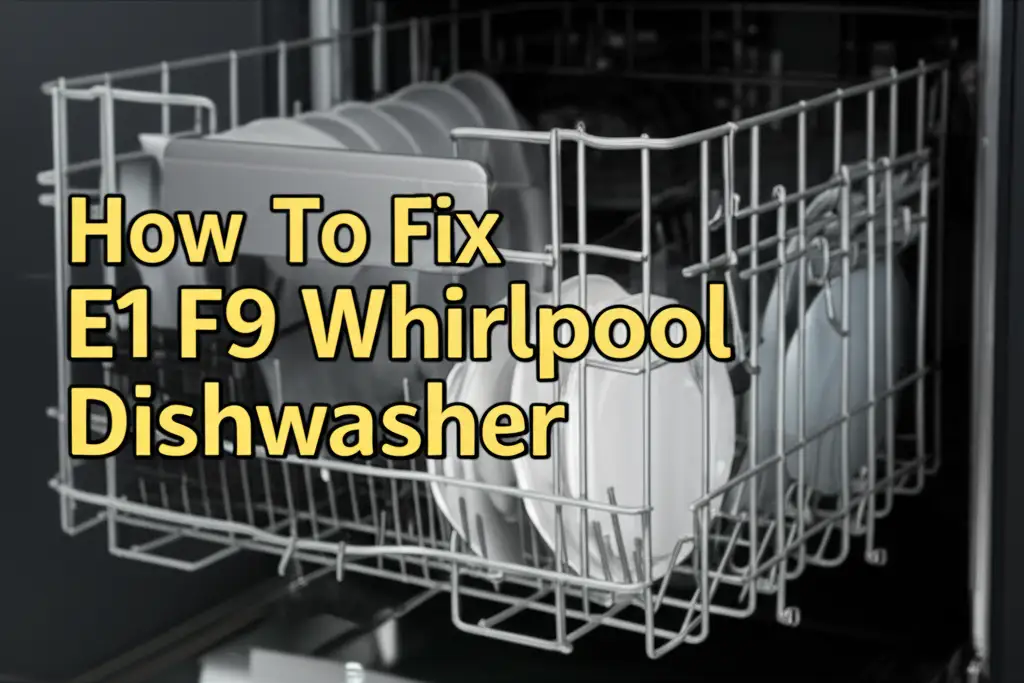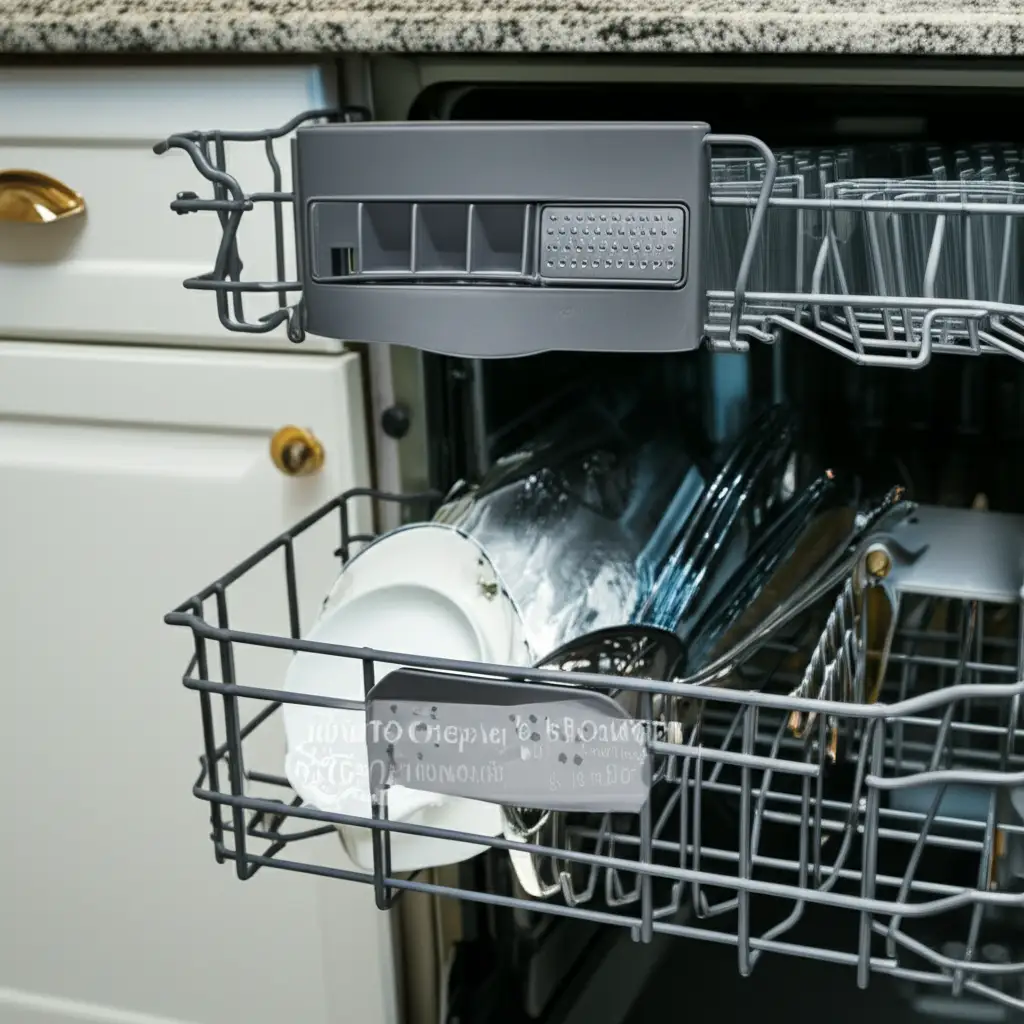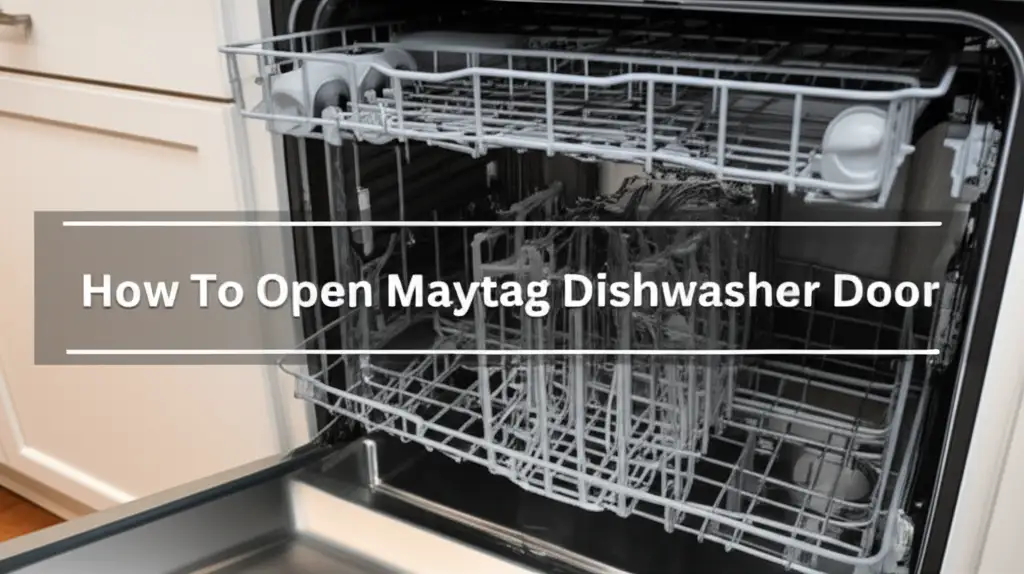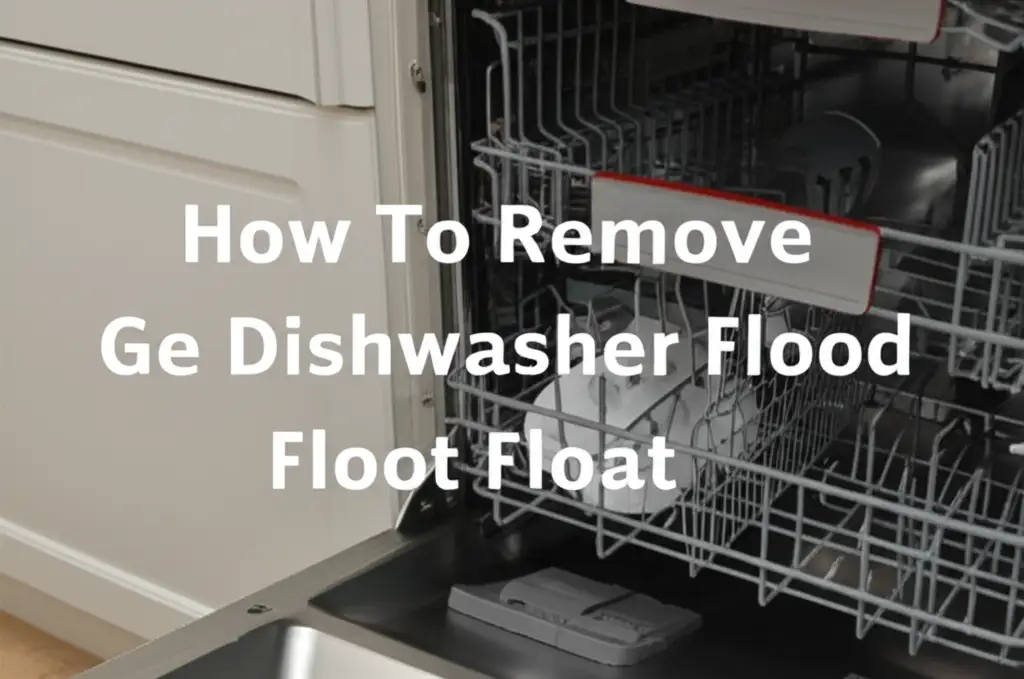· Tessa Winslow · Appliance Repair · 17 min read
How To Fix Electrolux Washing Machine
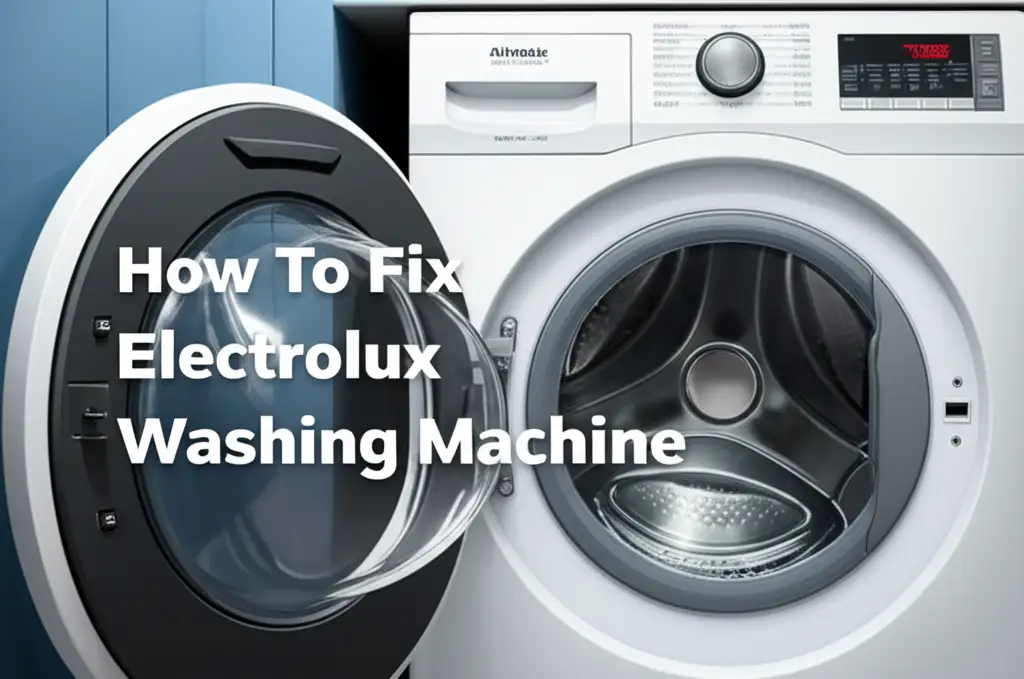
Fix Your Electrolux Washing Machine Today
Having trouble with your Electrolux washing machine can disrupt your daily routine. I understand the frustration when clothes pile up, waiting for a working appliance. My goal is to help you diagnose and fix Electrolux washing machine problems yourself. This article provides clear, actionable steps for common issues. We will look at problems like draining, spinning, and power failures. You will learn simple checks and repairs. Get ready to restore your washer to full operation.
Takeaway
- Identify common Electrolux washing machine problems like draining, spinning, or power issues.
- Perform simple diagnostic checks before calling a professional.
- Understand basic component functions and their repair steps.
- Maintain your washer regularly to prevent future breakdowns.
- Follow safety precautions during any repair process.
To fix an Electrolux washing machine, identify the symptom first. Check power, water supply, and error codes. Then, inspect components like the drain pump, motor, or door latch. Simple repairs often involve cleaning filters or resetting the machine.
Diagnosing Electrolux Washing Machine Issues
My Electrolux washing machine sometimes acts up. When it does, I start with basic troubleshooting. Proper diagnosis saves time and money. It prevents unnecessary part replacements. You need to observe the machine’s behavior closely. Does it make strange noises? Does it stop mid-cycle? Each symptom points to a specific area.
Start by checking the power supply. Confirm the washer is plugged in. Check the circuit breaker. A tripped breaker means the machine lost power. Resetting it might solve your issue quickly. Next, inspect the water supply. Ensure both hot and cold water faucets are fully open. Kinked hoses stop water flow. This prevents the machine from starting a cycle.
Look for any visible damage. Check the door seal for tears. Inspect hoses for leaks. Sometimes, a foreign object gets stuck. I once found a coin in my washer’s drain pump. This simple find solved a major issue. Listen to the sounds the machine makes. A humming noise might mean a motor issue. A grinding sound often indicates a bearing problem. Documenting these observations helps narrow down the cause.
Many Electrolux models have diagnostic modes. These modes can display error codes. The user manual explains these codes. An error code gives a direct clue about the problem. For example, an E10 code usually points to a water fill issue. Knowing the code helps you go straight to the root cause. This systematic approach saves time. It makes fixing Electrolux washing machine troubles easier.
Troubleshooting Electrolux Washer Draining Problems
It is frustrating when your Electrolux washing machine does not drain. Water remains in the drum after a cycle. This problem is common. I have dealt with it myself many times. Usually, a blockage causes this issue. The drain pump or hoses are often responsible.
First, check the drain hose. It should not be kinked or crushed. Ensure it sits at the correct height in the standpipe. If the hose is too low, the water can siphon out prematurely. This leads to incomplete draining. Pull the machine out from the wall. Inspect the hose’s entire length. Straighten any bends you find.
Next, examine the drain pump filter. Many Electrolux washers have a small filter at the bottom front. This filter collects lint, coins, and small items. A clogged filter stops water from draining. Place towels on the floor first. You will need to drain residual water. Open the access panel. Unscrew the filter cap slowly. Let the water drain into a shallow pan. Remove any debris you find. Clean the filter thoroughly under running water. Then, reinsert it and tighten the cap. This simple step often solves draining issues.
If the filter is clean, the drain pump itself might be faulty. The pump removes water from the drum. You can often hear it humming but not draining. This means the impeller inside the pump is stuck. Sometimes, a foreign object lodges in the impeller. Accessing the pump requires removing panels. Disconnect the power before doing this. Carefully inspect the pump for blockages. If the pump is clear but still not draining, it may need replacement. Sometimes, debris can get stuck further down the plumbing line connecting to the washing machine. Understanding what plumbing you need for a washing machine helps in identifying external factors.
Finally, check the air gap or standpipe if you have one. These can also get clogged. A clog here restricts water flow. Clear any obstructions you find. Proper drainage is vital for clean clothes. Fixing Electrolux washing machine drainage issues improves performance.
Solving Electrolux Washer Not Spinning Issues
My Electrolux washing machine sometimes leaves clothes soaking wet. This means it did not spin correctly. A washer not spinning is a common complaint. Several components can cause this problem. The motor, drive belt, or door latch are usual suspects.
First, check the load balance. An unbalanced load often prevents the spin cycle. The machine detects uneven weight. It stops spinning to prevent damage. Open the door. Redistribute the clothes evenly inside the drum. Remove very heavy items. Try running a spin-only cycle. This simple action often fixes the problem.
Next, inspect the door latch assembly. The washer will not spin if the door is not fully closed and latched. The door switch tells the machine the door is secure. If the latch is broken or the switch is faulty, the machine thinks the door is open. It will not start the spin cycle for safety. Visually inspect the latch. Is it broken? Does it engage properly? Sometimes, the striker on the door needs adjustment. If the latch assembly is faulty, you might need to replace it. A good seal is also critical. Ensure your Electrolux washer door closes tightly.
The drive belt connects the motor to the drum. If the belt is loose, worn, or broken, the drum will not spin. Unplug the machine first. Access the rear or bottom panel. Look for the drive belt. It should be taut around the pulleys. If it is cracked, frayed, or off its pulley, replace it. This is a common wear-and-tear part. Another possibility is the motor. If the motor hums but the drum does not turn, the motor might be failing. This requires professional service or advanced DIY skills. Discharging the capacitor is a safety step for any electrical repair. You can learn how to discharge a washing machine capacitor to prevent shock.
Lastly, consider the suspension system. Worn suspension rods cause severe shaking. This prevents the machine from reaching high spin speeds. The machine might stop the cycle if vibrations are too intense. Inspect the rods for signs of wear. Replacing them can solve the issue. Proper function of these parts is key to fixing Electrolux washing machine spin problems.
Addressing Electrolux Washing Machine Power and Starting Problems
Imagine pressing the start button, and nothing happens. Your Electrolux washing machine shows no signs of life. This is a power issue. I find these can be simple fixes or require more investigation. Begin with the most basic checks.
First, confirm the machine is plugged in securely. The outlet must have power. Test the outlet with another appliance, like a lamp. If the lamp works, the outlet is fine. Next, check your home’s circuit breaker box. A tripped breaker will cut power to the washer. Locate the breaker labeled for your laundry room. Flip it to the “off” position, then back to “on.” This resets the circuit. If the breaker trips again immediately, you have an electrical short. Do not keep resetting it. This needs a professional electrician.
The door latch assembly plays a critical role. The machine will not start if the door is not fully closed and locked. The door interlock switch signals this to the control board. If the switch is faulty, the machine thinks the door is open. It prevents any operation. Listen for the click of the latch when you close the door. If you do not hear it, the latch might be broken. You can try to reset the machine. Unplug it for 5-10 minutes, then plug it back in. This often clears minor electronic glitches.
The main control board manages all washer functions. If it fails, the machine will not power on or respond. This is a more complex repair. Replacing a control board requires specific knowledge. I usually confirm all other possibilities first. A multimeter can test for power at various points on the board. This should only be done by someone comfortable with electrical testing. Sometimes, power surges can damage the control board. This prevents the washing machine from starting.
Another less common issue is a faulty power cord. Inspect the cord for cuts or damage. A damaged cord prevents power from reaching the machine. Replace it if you find any issues. For parts that need removal or access, like internal components, knowing how to remove the middle part of a washing machine can be helpful, though always with safety first. Ensuring power is the first step in fixing Electrolux washing machine starting problems.
Fixing Electrolux Washer Leaks and Water Issues
A leaky Electrolux washing machine causes a messy problem. Water on the floor is a clear sign something is wrong. I always try to identify the source of the leak first. Leaks often come from hoses, the dispenser, or door seals.
Start by checking the water inlet hoses. These connect the machine to the wall faucets. Inspect both the hot and cold water hoses. Look for cracks, bulges, or loose connections. Tighten any loose fittings with a wrench. Replace hoses if you see any signs of damage. I recommend replacing them every five years as a preventative measure. Hoses are inexpensive. They prevent costly water damage. Make sure the rubber washers inside the hose connections are intact. Worn washers can cause drips.
Next, examine the drain hose. This hose carries dirty water away from the machine. Check for cracks or loose clamps at the back of the washer. Ensure the hose is properly inserted into the standpipe or sink. If the leak is from the standpipe area, the drain might be clogged. This causes water to back up and overflow. Clear any clogs in your household drain system.
The detergent dispenser can also leak. Detergent buildup or a clogged dispenser causes water to overflow. Remove the dispenser drawer. Clean it thoroughly. Use a brush to remove any soap residue. Clean the housing where the drawer sits. Sometimes, water pressure is too high. This forces water out of the dispenser. You can adjust the water pressure at your home’s main water valve if needed. Overfilling the dispenser with too much detergent can also lead to leaks. Using the correct amount of detergent is important for performance and to avoid leaks. Remember to place your detergents in what goes where in a washing machine correctly.
The door seal (gasket) on front-load Electrolux washers is a common leak source. Inspect the rubber seal around the door opening. Look for tears, holes, or mold buildup. Mold can trap water and cause overflows. Clean the seal regularly with a damp cloth. Remove any hair or debris. If the seal is damaged, it needs replacement. This job can be tricky. It involves removing the front panel and stretching a new seal into place. Fixing Electrolux washing machine leaks protects your home.
Decoding Electrolux Washer Error Codes
When my Electrolux washing machine shows an error code, I know it is trying to tell me something. These codes are not random numbers. They point directly to a specific problem. Understanding them saves a lot of guesswork. I keep my user manual handy for this reason.
Each Electrolux model may have slightly different codes. Always consult your specific manual first. However, some codes are universal or very common. For example, “E10” or “C1” often means a water fill problem. This could be due to closed water taps, kinked hoses, or low water pressure. I would check my water supply first. Ensure both hot and cold faucets are open. Then, I would inspect the inlet hoses for bends or blockages. This code usually indicates the machine is not getting enough water to start or continue a cycle.
“E20” or “C2” typically signals a draining issue. This means the water is not leaving the drum. We discussed this in detail earlier. I would check the drain pump filter for clogs. I would also inspect the drain hose for kinks or blockages. The drain pump itself might be faulty. If the filter is clean and hoses are clear, the pump may need replacement. A full drain cycle must complete before the machine moves to the spin cycle.
“E40” or “C4” points to a door lock problem. The machine thinks the door is open. This prevents it from starting or spinning. I would check if the door is fully closed. Sometimes, lint or small items get stuck in the latch. Clean the latch area. If the latch is broken or the door switch is faulty, it needs replacement. For safety, the machine will not run with an open door. The machine will not start spinning if the door sensor is not engaged.
Other common codes include “E30” (pressure sensor fault), “E60” (heating element issue), and “E90” (control board communication error). Some models also show “EF0” or “EFO” which means too much foam. This requires using less detergent. An error code is a helpful diagnostic tool. It guides your repair efforts. Knowing these codes helps in fixing Electrolux washing machine issues more quickly.
Essential Maintenance for Electrolux Washing Machines
Maintaining your Electrolux washing machine prevents many common problems. I have learned that regular care extends the appliance’s life. It also keeps clothes cleaner. Simple steps make a big difference.
First, always clean the detergent dispenser. Residual detergent or fabric softener can build up. This leads to clogs or leaks. Remove the dispenser drawer. Rinse it under warm water. Use a small brush to clean any stubborn residue. Do this once a month. This ensures proper dispensing of cleaning agents.
Second, clean the drain pump filter regularly. This filter catches lint, coins, and small items. A clogged filter restricts water drainage. It can even lead to error codes. I clean mine every few months. More often if I wash items with a lot of lint. Place a shallow pan and towels below the filter. Unscrew the cap slowly. Remove any debris. Rinse the filter thoroughly.
Third, run a maintenance wash cycle. Front-load washers, especially, can develop mold and odors. Mold grows in the damp rubber door seal. Run an empty hot water cycle with a washing machine cleaner or white vinegar. This helps remove mold, soap scum, and bacteria. Pay special attention to the door seal (gasket). Wipe it dry after each use. Pull back the folds of the rubber seal. Remove any trapped debris or mold. This also prevents leaks from a damaged seal. For best results, use a product designed to clean washing machine agitator or the entire drum.
Fourth, check the water inlet hoses. Inspect them for cracks, bulges, or leaks annually. Replace them if you see any signs of wear. Tighten loose connections. Hoses are cheap. A burst hose causes significant water damage. Turn off the water supply to the washer if you go on vacation. This prevents accidental flooding.
Finally, keep the machine level. An unbalanced machine shakes violently during the spin cycle. This causes excessive wear on internal components. It can also lead to error codes or incomplete cycles. Use a spirit level to check stability. Adjust the leveling feet as needed. Proper leveling ensures smooth operation. Consistent maintenance helps in fixing Electrolux washing machine issues before they start.
When to Call a Professional for Electrolux Washer Repair
While I encourage DIY repairs, some problems are beyond basic troubleshooting. Knowing when to call a professional Electrolux technician saves time and prevents further damage. I consider a few factors before picking up the phone.
If the problem involves major electrical components, I step back. This includes issues with the motor or the main control board. These parts are expensive. Incorrect handling can cause more damage. It can also be dangerous. Testing live electrical components requires specific tools and expertise. If you are not comfortable with electrical work, do not attempt it. Safety comes first.
Complex mechanical failures also warrant a professional. If the drum bearings are faulty, the repair is extensive. It often involves disassembling most of the machine. Replacing the outer tub or inner drum can be a big job. These tasks need specialized tools and significant experience. Attempting them without the right skills can void your warranty. It can also make the problem worse.
Repeated issues suggest a deeper problem. If you fix a problem, but it returns quickly, something else might be wrong. For example, if your drain pump keeps failing after replacement, there might be an ongoing clog in your home’s plumbing system. A professional can diagnose these underlying causes. They have advanced diagnostic equipment.
Finally, if you have tried all the troubleshooting steps and the machine still does not work, it is time for expert help. You have done your part. A professional technician can pinpoint the exact fault. They have access to specific Electrolux repair diagrams and parts. They ensure the fixing Electrolux washing machine process is done correctly and safely. Consider the cost of professional repair versus a new machine if your appliance is old.
FAQ Section
Q1: Why is my Electrolux washing machine not draining completely?
A1: Your Electrolux washer may not drain completely due to a clogged drain pump filter. Check for lint, coins, or small items in the filter located at the bottom front. Also, inspect the drain hose for kinks or blockages. The drain pump itself might be faulty or obstructed. Clear any debris from these areas to restore proper drainage.
Q2: What do common Electrolux error codes like E10 or E20 mean?
A2: Electrolux error codes point to specific issues. E10 (or C1) typically indicates a water fill problem, meaning the machine is not getting enough water. Check water supply lines and faucets. E20 (or C2) signifies a draining issue, where water cannot leave the drum. Inspect the drain pump filter and hose for clogs.
Q3: Why is my Electrolux washing machine not spinning clothes dry?
A3: An Electrolux washer not spinning often relates to an unbalanced load. Redistribute clothes evenly. Check the door latch and switch; the machine will not spin if it thinks the door is open. A worn or broken drive belt can also prevent the drum from spinning. Lastly, faulty motor or suspension issues might be the cause.
Q4: Can I fix my Electrolux washing machine’s power issues myself?
A4: For power issues, start by checking the power cord and ensuring it is plugged in securely. Reset your home’s circuit breaker. Test the outlet with another appliance. If these steps do not work, it might be a faulty door latch switch or main control board. Simple power issues are often DIY, but complex electrical problems need a professional.
Q5: How often should I clean my Electrolux washing machine?
A5: I recommend cleaning your Electrolux washing machine regularly. Clean the detergent dispenser monthly to prevent buildup. Clean the drain pump filter every few months, especially if you notice drainage issues. Run an empty maintenance cycle with hot water and a cleaner annually to remove odors and soap scum. Wipe the door seal dry after each use.
Q6: What causes a burning smell from my Electrolux washing machine?
A6: A burning smell from your Electrolux washing machine often indicates an electrical issue. This could be a failing motor, a short circuit, or a worn belt slipping on a pulley. Immediately unplug the machine. Do not use it until the cause is identified and repaired. It is best to contact a qualified technician for safety.
Conclusion
Taking on the challenge to fix Electrolux washing machine issues yourself empowers you. We have covered common problems from a lack of power to frustrating drainage or spinning failures. You now understand how to diagnose issues by observing symptoms and checking error codes. Simple cleaning of the drain filter or rebalancing a load can often resolve major headaches. You also learned about checking hoses, door latches, and power supplies.
Remember, safety is always first. Disconnect power before inspecting internal components. While many repairs are within a homeowner’s ability, know when to call a professional. Complex electrical work or major mechanical part replacements are best left to experts. Regular maintenance, like cleaning the dispenser and running maintenance cycles, significantly extends your appliance’s life. By following these steps, you keep your Electrolux washing machine running smoothly. This ensures clean clothes and a less stressful home life. Now you can approach your washer problems with confidence.
- Electrolux repair
- washing machine troubleshooting
- appliance repair guide
- DIY washer fix
- common Electrolux problems
- washing machine maintenance


